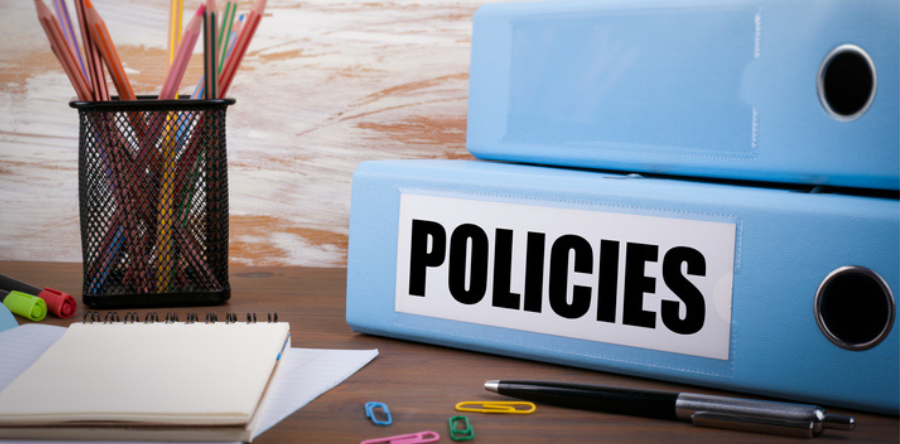Build the workplace culture you want by offering leadership coaching
A psychologically safe culture is an emotionally safe, caring, inclusive and welcoming environment. Employees feel safe speaking up and sharing their...
3 min read
 Dr. Bill Howatt
:
January 3, 2024
Dr. Bill Howatt
:
January 3, 2024

The workplace significantly influences employees’ experiences; every interaction creates positive or negative emotions. If they have more negative than positive experiences, it can increase the risk of mental harm and illness in the workplace.
Sadly, I’m noticing increased incivility, misunderstanding, and unresolved conflict in many workplaces. When they aren’t dealt with in a meaningful way, they can fester and lead to a culture of bullying, harassment, discrimination and workplace violence.
Most CEOs I chat with truly care and realize they have a role in creating psychologically safe workplaces; however, knowing and doing are separate things. And, even when action is being taken, they aren’t sure their efforts are having the desired impact.
When a CEO asks me about psychological safety, I point out that psychologically safe workplaces are characterized by accountability, learning, and healthy conflict resolution. All employees feel included, valued and encouraged to speak up without fear of retaliation.
One of the first questions I ask is, “Do you have a safe and respectful workplace policy and training in place?”
At the very least, you should ensure that you are fulfilling your obligation to maintain a psychologically safe workplace as defined by provincial legislation.
It’s also helpful to establish a baseline of psychosocial risk factors that may create unnecessary strain and stress in your workplace.
If these foundational pieces are in place, I ask, “Do you know if your policies and programs are working?” Often I hear, “I’m not sure.”
I developed the Mental Harm Prevention Roadmap with WSPS to guide employers through building programs and policies to impact the employee experience positively. It outlines eight evidence-based building blocks that facilitate a Plan-Do-Check-Act approach.
Taking this step demonstrates to your employees that you are committed to ensuring they are psychologically safe by taking stock of the safe and respectful policies, procedures, training and resources that work well and those that need improvement.
The following are steps to conduct a safe and respectful workplace audit. Of course, every organization’s list will be influenced by size, business type and applicable federal or provincial OHS standards.
You can obtain the data you need from HR records, conducting one-on-one interviews and hosting employee focus groups. It is also prudent to consider doing a workplace violence risk assessment as a part of the process.
Safe and respectful policy and procedure review—Are these critical documents easily understood? Or are they difficult to understand? With low literacy levels and a growing number of employees for whom English is a second language, you should be careful not to assume that all employees will understand what they mean and what is expected of them. Check to confirm understanding.
Examine how relatable the current safe and respectful training is—Training on this topic often meets corporate and administrative requirements but may not be very engaging. What is your training program like? Does it clarify what employees should do when they experience a concern, how complaints are handled and employees’ responsibilities for creating a psychologically safe workplace? Assess the perceived value of training and its usefulness for developing the habits required for a psychologically safe culture through an adult learning lens.
Build trust in your ability to execute policies and procedures fairly—Employees often observe how employers and leaders deal with other employees. Policies and procedures for a safe and respectful workplace are of little value if employees do not believe the employer will enforce them fairly and equitably. It can be helpful to conduct a workplace violence audit to check on overt and covert risks that could put employees at risk and understand employees’ concerns about workplace violence and whether they believe employers’ actions are adequate.
Measure and track the employee experience —The number of complaints and investigations is a helpful data point. It may be beneficial to survey to measure employees’ experience. The Employee Experience Review for a Respectful Workplace also collects data that can be used for a workplace violence risk assessment. For example, if 25% of your workforce experienced one event in the last 12 months and only 1% reported, this should raise questions and allow you to ask why. Employees are less likely to report concerns they experience or unsafe behaviours they witness if they do not trust leadership.
Provide access to competent workplace investigators—Faulty workplace investigation is risky. Every HR and OH leader must be mindful and mitigate this risk. Whether you are using employee or external investigators, ensure they have been trained and completed a credible program such as UNB Workplace Investigation Training.
Outline a framework for facilitating workplace restoration—There is a risk of hurt feelings or emotional ruptures when a formal or informal complaint is made. Repairing and moving forward is critical to creating a psychologically safe culture after an incident. Employers cannot fire everyone who breaches a respectful workplace policy or cultural values. Leaders need to know how to move through conflict to facilitate restoration, repair and acceptance of what happened. Discipline and restitution must be completed when appropriate, along with forgiveness, so all parties involved can move forward. One significant gap I find is that this step is not contemplated enough in many organizations, and there is an over-focus on the process, not people and their emotions. The north star of psychological safety is removing fear and silence and dealing with conflict head-on to learn and move forward.
As a CEO, you can demonstrate that you place high value on the employee experience by having the right policies and processes in place and evaluating safety and respect in your workplace regularly.
Get to know the author – Dr. Bill Howatt

A psychologically safe culture is an emotionally safe, caring, inclusive and welcoming environment. Employees feel safe speaking up and sharing their...

3 min read
A recent article published in WSPS’ eNews highlights the importance of protecting employees from domestic violence. This pervasive threat may be...

Most leaders want to create diverse and inclusive workplaces. In From Engagement to Retention: DEI’s Impact on the Marketing Profession, a survey by...